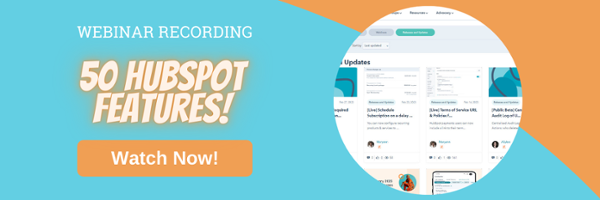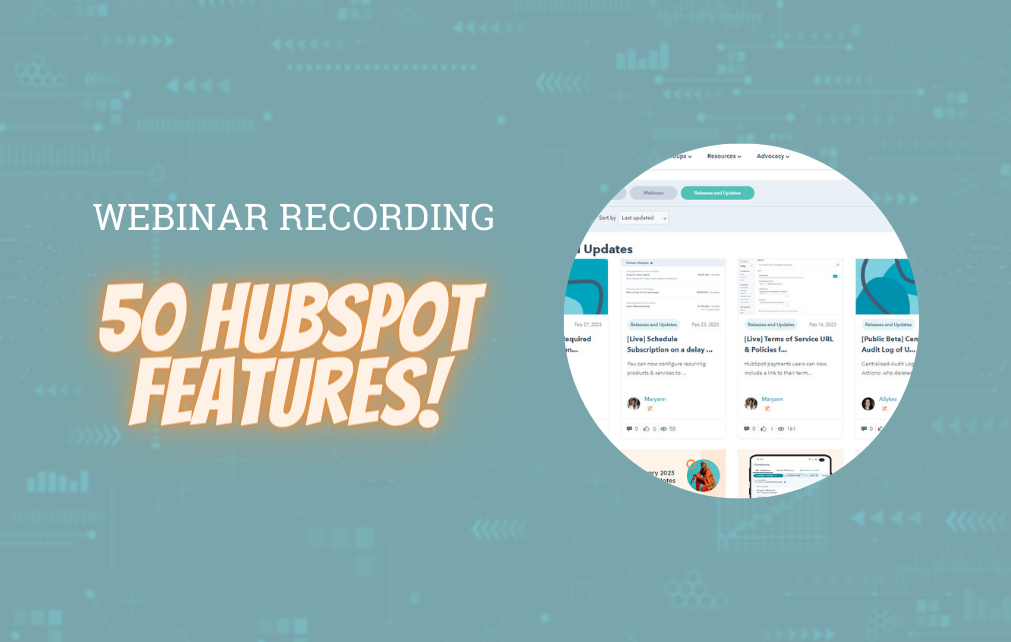
If you work in HubSpot, you know how hard it is to stay on top of feature releases, betas, release notes, and which users can access what. Our recent webinar breaks down the best tools for you via a 50-minute rapid-fire round of the last five months of HubSpot features, focusing on B2B tools. Our webinar centers on five key themes: Administering Users and Getting Adoption, True CRM Customization, HubSpot Campaigns, Quotes and Payments, and a final Grab Bag of Updates You Can't Live Without—watch the recording to dive in!
Background: Cold Outreach Has Changed
The average number of cold outreach attempts needed has substantially increased. When we first started Orange Marketing, we told people they should make six to nine attempts. And slowly, that progressed to 9-12 attempts. I've talked to people making as many as 20 attempts lately to reach a cold prospect successfully.
This increase was accelerated during the pandemic and reflects how people have grown tired of cluttered email inboxes. So if it takes many more attempts to connect, you are not alone—it is happening across industries. And do not fail to reach out more than you have in the past, or you will not have any positive results.
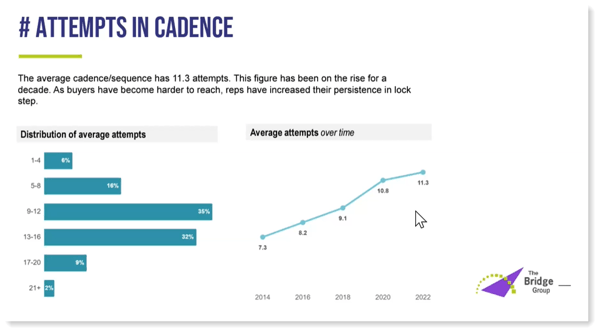
It's Tougher To Get Quality Conversations
Additionally, the number of quality conversations with prospects is going down. So despite the number of efforts going up, the number of quality conversations is decreasing, proving it's more difficult than ever to reach people by cold outreach.
There are an average of 3.6 Quality Conversations per rep per day. That's a 55% (or 10%) drop since 2014. This is hard data on how much more difficult the SDR role has become.
So even though you are attempting more conversations, you will still have fewer of them. The moral of the story here is that if you do cold outreach, you need a good email strategy that incorporates personalization. These days you need to use email that is extremely targeted, timely, and relevant.
Administering Users and Getting Adoption
New HubSpot User Management
The old way of administering HubSpot users involved many steps if you wanted individual users to have specific tools. Everything from setting a user profile, signature, meeting links, and notifications to setting views, index page columns, etc. very cumbersome to set. And this all required time to train people on and/or very detailed instruction documentation.
But now, there are some things that you can "set and forget".
Preset
The first is something called Preset, which is truly a godsend and has grown over the past few months. You can use Preset with a specific user or a team. You can use it to assign a default homepage, which for your sales team, you might select the deals or dashboard page, and for the marketing team, you could set it to something else like the campaigns page or a different default dashboard.
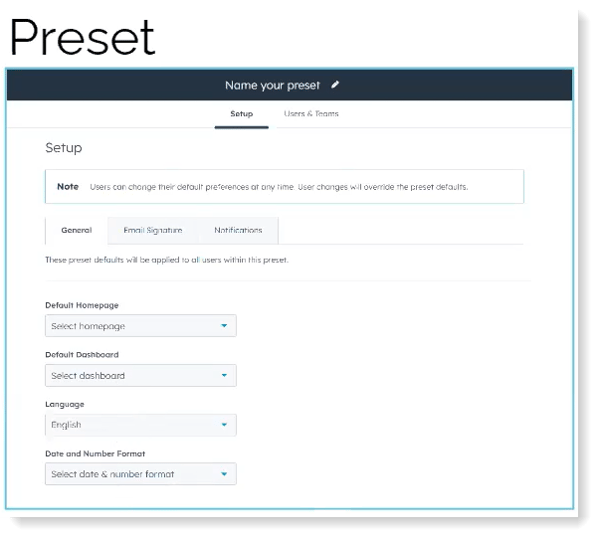
You can also set language and data number format, and more importantly, you can set every user's email signature by team. It allows you to use email tokens or tokens in general to ascribe things like name, phone number, email, job title, location, region, etc. It's a big deal.
Notifications Profile
There are also settings called Notifications Profile, where you can set the notifications for your users in a specific team. I can't tell you how much of a pain this has been in the past, where people would say they were getting too many notifications, weren't getting notifications, or didn't know how to deal with them. And there are so many options that it takes a lot of work for an average user to know which notifications they need or want. You can now set them for users, which helps them know how to progress leads along or best deal with customers.
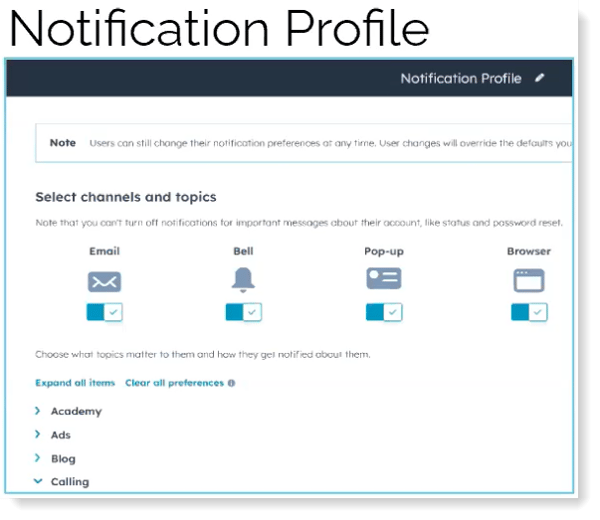
Permission Set
And thirdly, and sadly only for Enterprise users, is something called Permission Set, which allows you to set the permissions you want for each type of user. HubSpot makes it an absolute breeze to set these up for your users and teams. The newest in all of this is the default views.
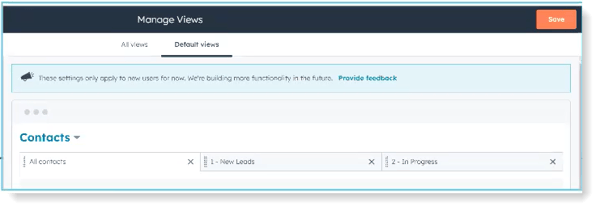
And holy cow, we are excited about default views! You can now set what default columns a user will see in their contact or company's list view, and you can create tabs of views they see.
In "views by lead status", we create new leads and in-progress leads so that sales reps know what actions to take and when. These views can differ by your role in the company, and now your filter views as well. You can even set them by team.
Administering Users
There used to be 8-9 steps to take to administer users. But now, you can create HubSpot users by uploading a comma-separated list of multiple users. If you have Enterprise, you can just pick a Permission Set, add them to a team, and add a Preset.
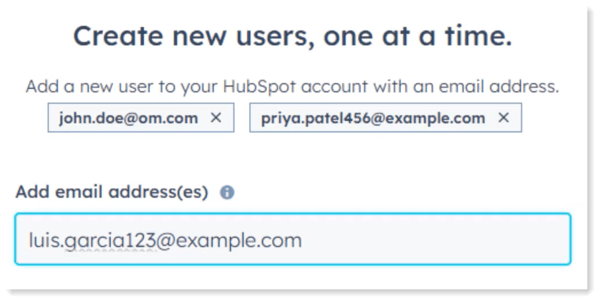
Once you've created and set a user's profile, you can now send an invitation, which allows you to grab a direct link for them and send it to them in a private email marked from you straight from HubSpot. They'll still need to complete their profile with a profile pic, connect their email calendar, add their phone number, and a few other little things, but the crucial settings to keep users on task can now be set up by you.
True CRM Customization
Record Layout
HubSpot has been releasing some powerful customization tools, including:
- CRM Record Layout - by team
- Left sidebar conditional customization now in Pro+
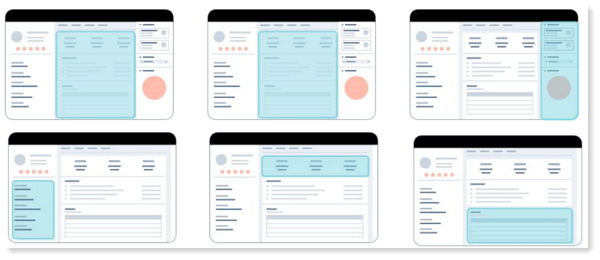 Control Views for Users to Focus Their Efforts
Control Views for Users to Focus Their Efforts
Deals & Deal Board
You can now use all kinds of tools to communicate and visualize sales plans and activity, including using:
- Colored Deal Tags
- Customize 'Create record' form by pipeline
- Configure associations when a record is created
- Shared Deals
- Deal Collaborators
- Surface pipeline stage properties when creating a record—Be mindful when setting up Deals and Deal Boards, keeping best practices in mind:
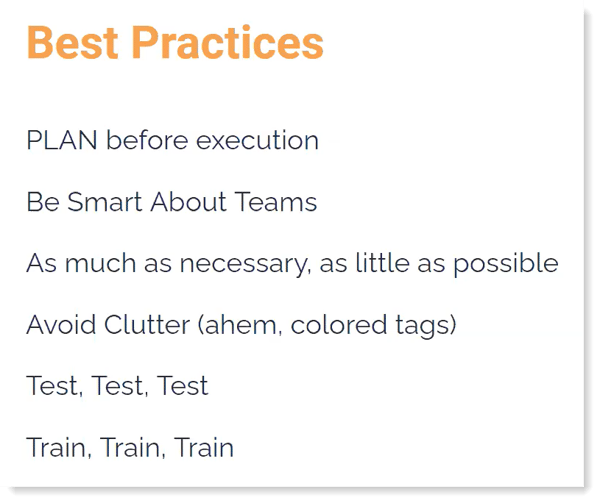 Deal Board Best Practices
Deal Board Best Practices
HubSpot Campaigns
HubSpot campaigns have been getting a facelift over the last year, with Campaign ROI, Customer filters and list views, meaningful calendars, and cloning introduced at last year's Inbound.
Team Collaboration
You can now comment and assign tasks within Campaigns, much like tagging people in Google docs.

You can also tag yourself within Campaigns to have things show up on your calendar. The calendar can be pretty valuable if you use tasks as placeholders.

Custom HubSpot Campaigns
Campaign properties have some new customization options. You can now set campaign properties for:
- Asset type
- Financial quarters
- Themes - good in cases where you'll have multiple campaigns rolled up into one big theme
- Partners - to designate a particular partner you may need to pay later
- Channels - useful if you're using or testing a certain channel
Associated Marketing Events & Metrics
You can also associate marketing events with online and offline platforms such as Zoom, Eventbrite, etc. HubSpot further allows you to see these new Influenced Contact Metrics in your list creation and detailed reports. HubSpot also now gives you the ability to export your entire campaign list.
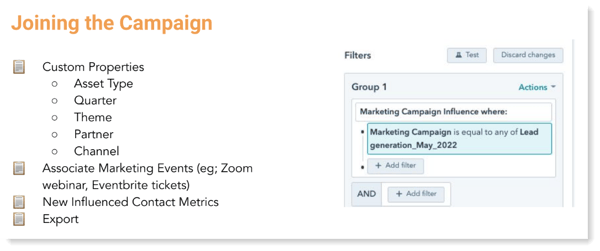
Collaboration Across HubSpot
HubSpot allows you to collaborate across landing pages, workflows, and emails. So you can collaborate right inside HubSpot if you're trying to explain how something is supposed to function or have a team member or client review something. We were initially skeptical about how much users would use the comments functionality, but we have found that these comment threads inside where the work is being created are very valuable.
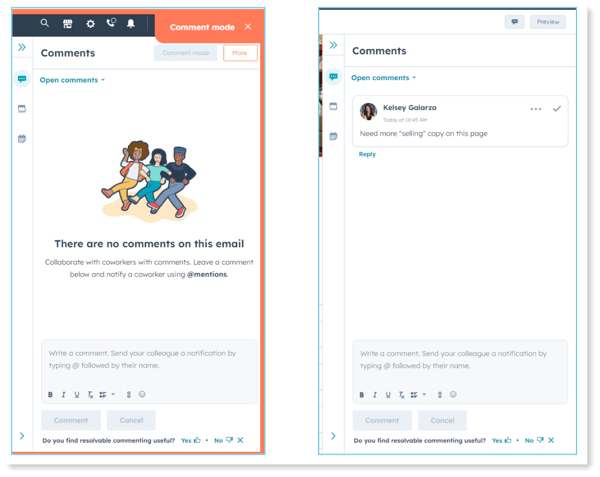
Quotes and Payments
Quotes and payments are really coming along with their capabilities for B2B.
You can now set up recurring payments via HubSpot's Subscriptions functionality. If you have a straightforward, recurring revenue product, you can set up a Subscription with a future date and list all your separate types of terms and conditions and payment terms.
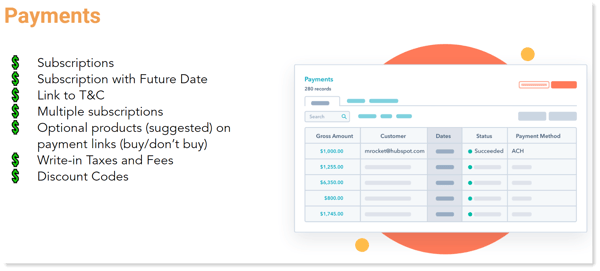 Payment Options
Payment Options
These options make your quotes look very professional.
There is also now invoice syncing from NetSuite, Microsoft Dynamics, and QuickBooks. If you have a relatively simple offering, you can build a complete revenue cycle right in HubSpot.
Grab Bag of Updates
Random Sampling
Random sampling was previously not possible. And we engaged in all kinds of bizarre workarounds like creating custom fields, hitting random lists, and then reshuffling those to get as random of a sample as possible where AB testing is impossible.
But now you can take any list and create a random sample using a percentage or a number, which is nice for testing sequences by sender for example.
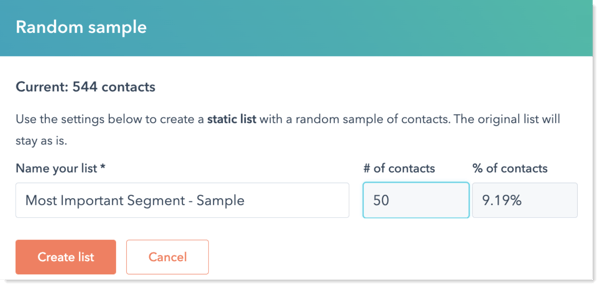
Imports/Validation
There have been many improvements to Imports and Validation rules, which are meant to keep your data much cleaner. We all know that garbage in is garbage out, so Imports are helping to make things much cleaner and allowing you to surface the descriptions of the fields to pick more relevant ones. This makes using that description box for your properties more important than ever.
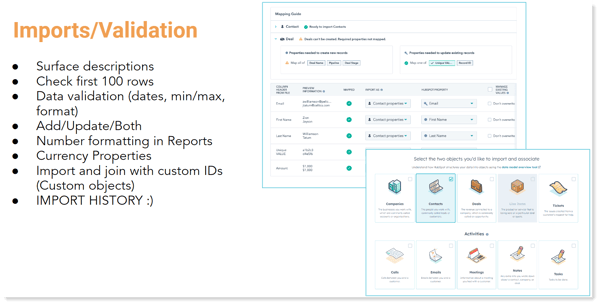
Use case example for imports/validation - Many companies have account and customer types. And if you users are not real clear on the differences between the two, they can easily put data in the wrong place. So now you can readily check and see what something is and where it belongs. This check can validate your first hundred rows. Previously it would only check five rows, so if you had junky data further down in your file, that wouldn't be caught on validation.
Now you can validate more completely, set a length for number fields (including decimals), and set mins, maxes, and unique values. You can also enter dates and select new uploading options, percentages, and currency properties previously impossible. There is a lot you can now do.
Parent/Child/Association Calculations
The Parent/Child Association calculations allow you to create custom properties to calculate the number of associated or number of somethings within Parent/Child or Associated objects. This enables you to roll up deals by specified objects, such as Contact or Company. You can really create your own calculation properties now.
Marketing Email Activity in Reporting
This is a very cool feature now available. You can now analyze your emails by day parting or other kinds of lists, segments, or campaigns.
Marketing Drag & Drop Blog Posts
Another new feature is the ability to add things like forms, quotes, and picture galleries or videos to richen your blog posts. Before, this was hard to do in the rich text editor, but now you can grab sections and make things present much cooler visually.
On Demand HubSpot Webinar Breakdown!
Don't miss any of our HubSpot step-by-step tips—Watch the recording!
Additional HubSpot Resources:
The Power of HubSpot for Early Stage Startups
How to Use 5 HubSpot Emails for Demand Generation
A Quick Look at HubSpot's Custom Report Tool
5 Reasons Startups Should Choose HubSpot Over Salesforce

